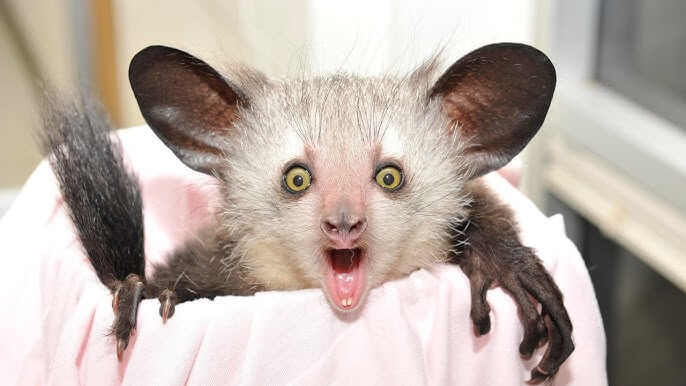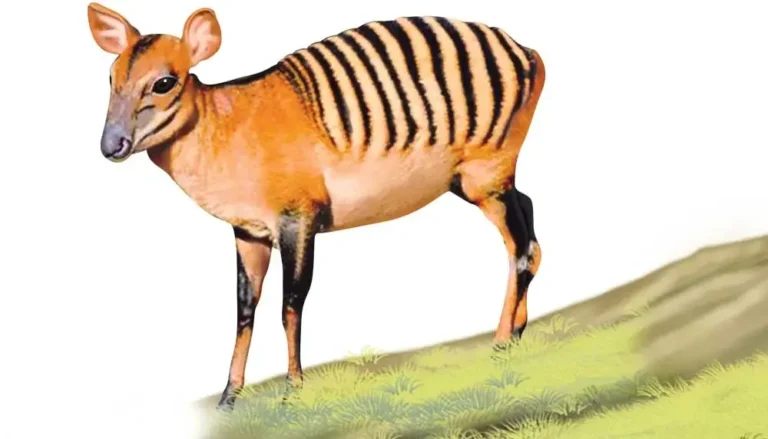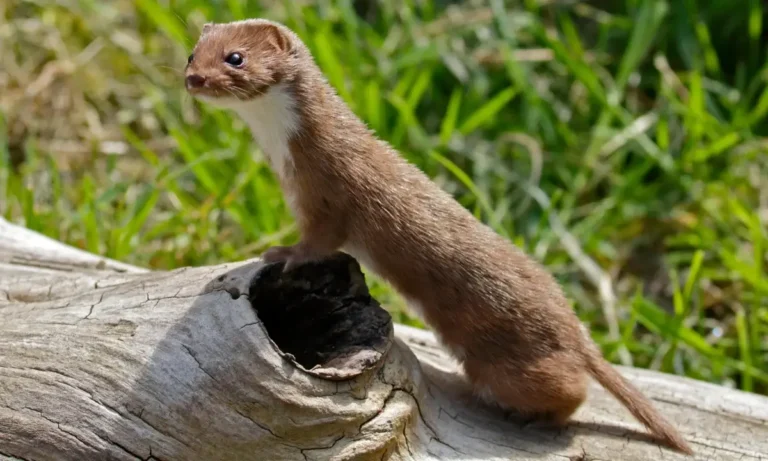Aye-Aye: Unique Lemur of Madagascar | Facts, Behavior, Conservation”
The aye-aye (Daubentonia madagascariensis) is one of the world’s most unique and fascinating primates, known for its peculiar appearance, nocturnal habits, and intriguing adaptations. Native to Madagascar, this lemur species has captivated scientists and animal enthusiasts alike due to its distinct characteristics and behaviors.
This article will delve deep into the aye-aye’s scientific classification, physical characteristics, habitat, behavior, diet, reproduction, predators, conservation status, exciting facts, evolutionary history, and its relationship with humans.
Contents
Scientific Classification
- Kingdom: Animalia
- Phylum: Chordata
- Class: Mammalia
- Order: Primates
- Suborder: Strepsirrhini
- Family: Daubentoniidae
- Genus: Daubentonia
- Species: D. madagascariensis
The aye-aye is the only extant species in its family, Daubentoniidae. Its closest relatives are other lemurs, but the aye-aye has evolved a set of unique traits that set it apart from other members of the primate order.
Physical Characteristics

The aye-aye is easily recognizable due to its unusual appearance, which includes several adaptations that have evolved to suit its unique feeding habits:
- Size: Aye-ayes are medium-sized primates, measuring about 30 to 40 cm (12 to 16 inches) in body length, with a bushy tail that can be as long as their body, reaching up to 60 cm (24 inches). They weigh between 2.2 to 2.7 kg (4.9 to 6 lbs).
- Fur: They have coarse, shaggy coats, predominantly dark brown or black fur, with some white-tipped guard hairs.
- Eyes and Ears: Their large, sensitive eyes are adapted for nocturnal vision, while their oversized, bat-like ears allow them to detect the faint sounds of insect larvae moving inside tree bark.
- Unique Finger Structure: The aye-aye’s most notable feature is its elongated, thin middle finger, which is used for tapping on wood to locate insects and then extracting them precisely. This “percussive foraging” method is similar to the way woodpeckers search for food, making the aye-aye a rare example of a primate using such a technique.
Habitat
Aye-ayes are found exclusively in Madagascar, inhabiting a range of forest types across the island. They primarily reside in:
- Rainforests: Dense, humid rainforests provide a rich supply of food sources, including fruits, nuts, and insect larvae.
- Deciduous Forests: Aye-ayes are also found in dry, deciduous forests, which adapt to different vegetation types and food availability.
- Mangroves and Bamboo Thickets: In some areas, they inhabit mangrove forests and bamboo thickets, showcasing their adaptability to various habitats.
Aye-ayes are arboreal and nocturnal, spending most of their lives high in the trees where they build large, spherical nests out of leaves and branches.
Behavior

Aye-ayes are solitary animals, with individuals typically occupying large home ranges. Key behavioral traits include:
- Nocturnality: Aye-ayes are strictly nocturnal, emerging from their nests at dusk to forage for food throughout the night.
- Territoriality: They are territorial creatures, with males having overlapping territories while females’ territories are more exclusive.
- Communication: Aye-ayes communicate through vocalizations, scent markings, and occasional visual displays. Their vocal repertoire includes grunts, screams, and chattering sounds that help maintain social bonds and avoid conflicts.
Diet
The aye-aye’s diet primarily consists of:
- Insects: Particularly wood-boring insect larvae, which they detect through tapping and echolocation-like techniques.
- Fruits and Nuts: They consume various fruits, nuts, and seeds. The aye-aye’s rodent-like incisors are well-suited for gnawing through tough exteriors to access seeds and nuts.
- Nectar and Fungi: Occasionally, they feed on nectar and fungi, supplementing their diet with plant-based foods.
Reproduction
Aye-ayes have a unique reproductive pattern compared to other lemurs:
- Mating System: They have a polygynous mating system, where males compete to access females.
- Breeding Season: There is no fixed breeding season; mating can occur at any time of the year.
- Gestation and Birth: The gestation period lasts about 170 days, after which a single offspring is born. The young aye-aye stays with its mother for about two years before becoming independent.
- Parental Care: The mother provides extensive care to the offspring, nurturing and protecting it until it can fend for itself.
Predators and Threats
Aye-ayes face several natural and anthropogenic threats:
- Natural Predators: Birds of prey, such as hawks and owls, are the primary natural predators of aye-ayes. Fossa, a carnivorous mammal endemic to Madagascar, also preys on aye-ayes.
- Human Threats: Deforestation, habitat fragmentation, and hunting pose significant threats to aye-ayes. Local superstitions often consider aye-ayes as omens of bad luck, leading to their killing on sight in some communities.
Conservation Status
The International Union for Conservation of Nature (IUCN) classifies the aye-aye as “Endangered.” Conservation efforts focus on habitat protection, anti-poaching measures, and community education to mitigate human-wildlife conflicts. Several conservation organizations and captive breeding programs are also working to ensure the survival of this unique primate.
Interesting Facts
- Rodent-like Incisors: Aye-ayes have ever-growing incisors similar to rodents, which gnaw through the wood to extract insect larvae.
- Unique Foraging Technique: Their percussive foraging method is unparalleled among primates and demonstrates a remarkable adaptation to their environment.
- Symbol of Misfortune: In some Malagasy folklore, aye-ayes are considered harbingers of bad luck, which has unfortunately led to their persecution.
Evolutionary History
The aye-aye’s evolutionary history is a subject of ongoing research. They are believed to have diverged from other lemurs approximately 40 million years ago, evolving unique adaptations to fill a specific ecological niche. Fossil evidence suggests there was once another species of aye-aye, Daubentonia robusta, which was larger but became extinct.
Relationship with Humans
The relationship between aye-ayes and humans is complex:
- Cultural Perceptions: Aye-ayes are associated with myths and superstitions in many parts of Madagascar. Some communities believe that an aye-aye sighting foretells death, leading to their killing on sight.
- Conservation Efforts: Despite these negative perceptions, conservationists are working to change local attitudes through education and ecotourism, highlighting the importance of aye-ayes in maintaining forest ecosystems.
Conclusion
The aye-aye is a remarkable example of evolutionary adaptation and ecological specialization. While human activities and local superstitions threaten its future, ongoing conservation efforts and scientific research continue to uncover new facets of its biology and behavior. Protecting this unique primate is essential not only for preserving Madagascar’s biodiversity but also for understanding the intricate web of life that exists on this island.
- Golden Retriever Pros and Cons: What Every Pet Parent Should Know - 15 September 2025
- Cane Corso Dog Breed: Health, Care, and Lifespan - 14 September 2025
- Catahoula Leopard Dogs: Description, Temperament, Lifespan, & Facts - 21 July 2025







